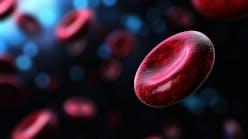Providing optional syphilis tests to most people seeking care at a large emergency department led to a dramatic increase in syphilis screening and diagnosis, according to a National Institutes of Health (NIH)-supported study of nearly 300,000 emergency department encounters in Chicago.
Most people diagnosed had no symptoms, which suggests that symptom-based testing strategies alone could miss opportunities to diagnose and treat people with syphilis. The results were published in the journal Open Forum Infectious Diseases.
In the study, the team introduced a syphilis screening strategy that offered optional syphilis tests to anyone whose electronic health record indicated they were between the ages of 18 and 64 years, had no documented HIV diagnosis, and had not been screened for HIV within the past 12 months. Syphilis testing also could be ordered for anyone not meeting those criteria based on clinical decision making. The study was conducted in a large, urban, academic emergency department in Chicago and assessed screening and diagnosis outcomes between June 2017 and May 2021—two years before the novel screening strategy intervention was introduced, and two years while it was in use—amassing a data set of 299,651 emergency department encounters.
Before the screening strategy intervention was introduced, only 5,209 of 146,644 (3.6%) people received syphilis tests. Post-intervention, testing increased dramatically to 37,289 of 153,007 or 24.4% of emergency department encounters. The number of people with presumed active syphilis infection based on the study testing algorithm increased from 161 to 624 post-intervention. Only a small proportion of people with presumed active syphilis infection presented with symptoms or underwent sexually transmitted infection testing. Among pregnant people, the proportion of people screened increased from 272 of 4,579 (5.9%) pre-intervention to 2,061 of 4,129 (49.9%) post-intervention. Confirmed syphilis diagnoses among pregnant people increased from two cases pre-intervention to 15 post-intervention, while the positivity rate remained constant, suggesting many missed opportunities for diagnosis pre-intervention. The number of concurrent syphilis and HIV diagnoses increased from seven to 24 without any additional intervention specific to HIV testing.
The authors suggest that optional emergency department screening could help close current healthcare gaps in syphilis diagnosis and treatment, including among pregnant people, high incidence populations, and people with limited access to routine healthcare. The study was led by the University of Chicago Sections of Emergency Medicine and Infectious Diseases and Global Health, with funding from the NIH’s National Institute of Allergy and Infectious Diseases (NIAID).





